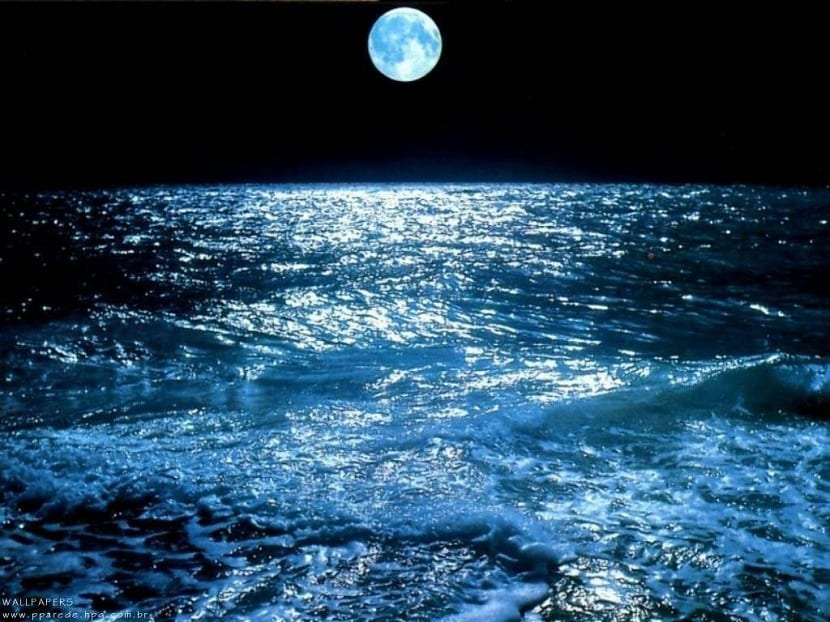
Tides, that phenomenon that makes the beach sometimes wider and other times smaller. These are periodic movements of large masses of water due to the gravitational attraction exerted by the moon and the sun on the Earth. When you talk about tide, you hear about alive and neap tides. What are each one and on what does their existence depend?
If you are interested in all this, here you will find all the information about how tides work, what are spring tides and what are their types. Do you want to continue reading? 🙂
The tide and its cycles
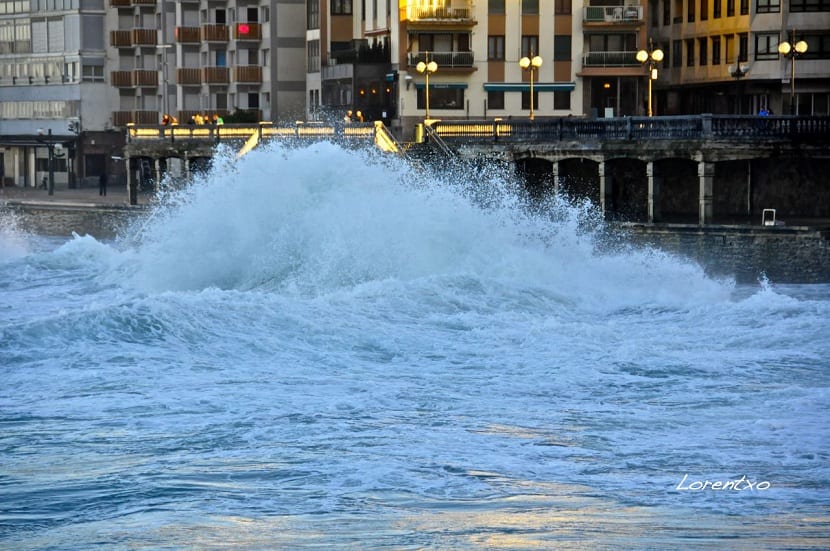
The moon and the Sun exert an action of gravity on the Earth that causes these water masses to move cyclically. Sometimes the gravitational force of attraction acts together with the inertia generated by the earth's rotational motion, and the tide is more pronounced. Because of the closeness of the moon to our planet, the action it produces on water masses is greater than that of the Sun.
The Earth goes around itself every 24 hours. If we stand from the outside, we could see how our planet and the moon align once a day. This would make one think that there are tidal cycles of one every 24 hours. However, they are produced in a cycle of approximately 12 hours. Why is this happening?
When the moon is in the vertical zone of an ocean, it attracts the waters and they rise. This is because the Earth and the moon form a system that revolves around a center of rotation. When this happens, on the opposite side of the Earth, the rotational movement that causes a centrifugal force takes place. This force It is capable of making the waters rise causing what we call high tide. In contrast, the faces of the planet opposite the moon unaffected by the pull of gravity will have low tide.
The tide is not always the same as there are some factors that determine its capacity. Although it is known that the cycles between low and high tide are 6 hours, in reality it is not completely like that. Earth is not made up of water alone. It is that there are continents, coastal geometries, depth profiles, storms, ocean currents and winds that affect the tides.
Alive and neap tides
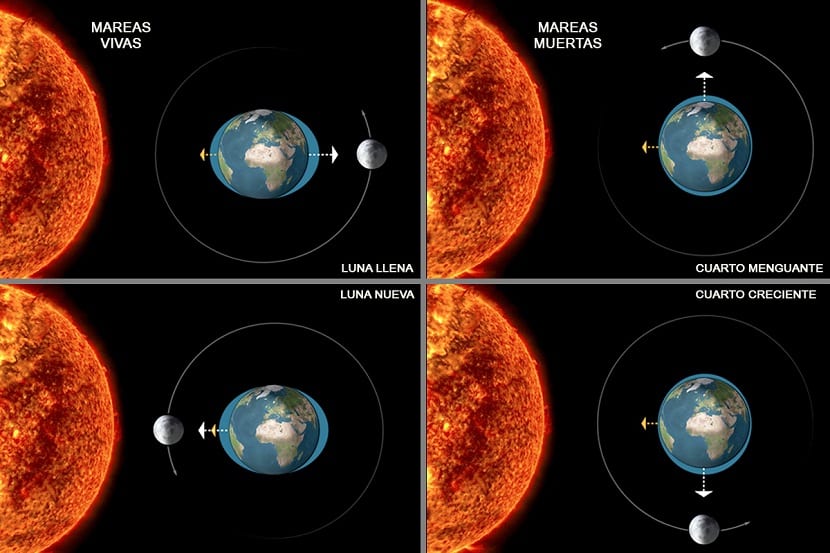
As we have been able to point out, the tides depend on the position of the moon and the Sun. When these are aligned with respect to the Earth, the power of gravitational attraction is greater. This normally happens when we have a full or new moon. This situation causes the tides to be higher and are called spring tides.
On the other hand, when the moon, the Earth and the sun form a right angle, the pull of gravity is minimal. In this way it is known as neap tides. This takes place during the waxing and waning periods.
To clarify all these concepts, we are going to leave some definitions that are very useful:
- High tide or high tide: When the sea water reaches the maximum level within the tidal cycle.
- Low tide or low tide: When the water level of the tidal cycle reaches its minimum level.
- High tide time: Time at which high tide occurs or the moment of greatest amplitude of sea level at a given point.
- Low tide time: Instance in which the low tide or lower amplitude of the sea level occurs at a certain point.
- Emptying: It is the period between high tide and low tide.
- Growing: Period between low tide and high tide
Spring tide types
There are many variables that act in the tides and, therefore, there are several types.
Spring tides
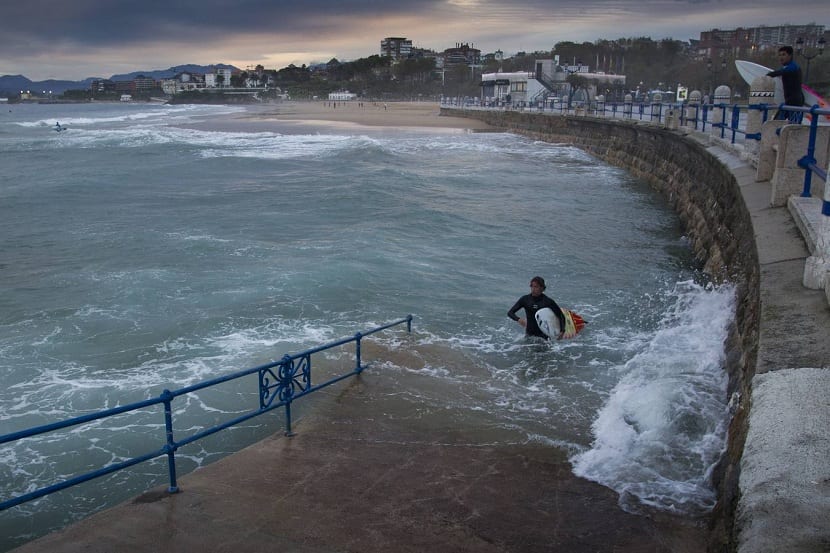
They are known as syzygies. They are the common spring tides, that is, those that take place when the earth, the moon and the sun are aligned. It is then when the attractive force is maximum. This occurs in periods of full moon and new moon.
Equinoctial spring tides
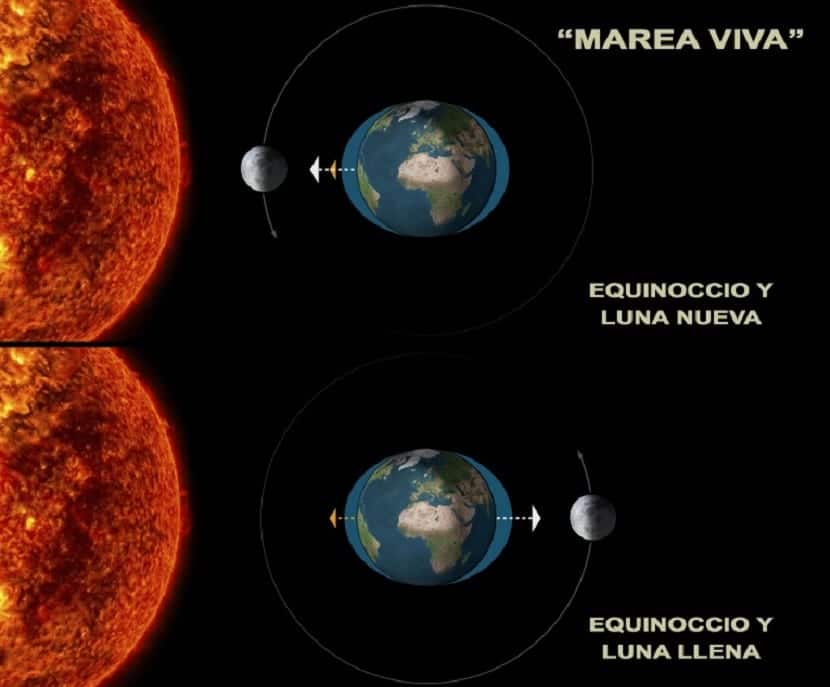
When these spring tides take place, one more conditioning factor is added. This takes place when the stars align on dates close to the spring or autumn equinoxes. It occurs when the Sun is totally on the plane of the Earth's equator. In this case the spring tides are quite strong.
Equinoctial perigee spring tides

This type of spring tide occurs when all of the above occurs and, in addition, the moon is in its perigee phase. This is when the high tide is higher than ever due to the closeness of the moon to Earth. In addition, being aligned the moon, Earth and Sun exert great gravitational force. When these spring tides occur, the most affected beaches are reduced by more than half.
Why are there no tides in the Mediterranean Sea?
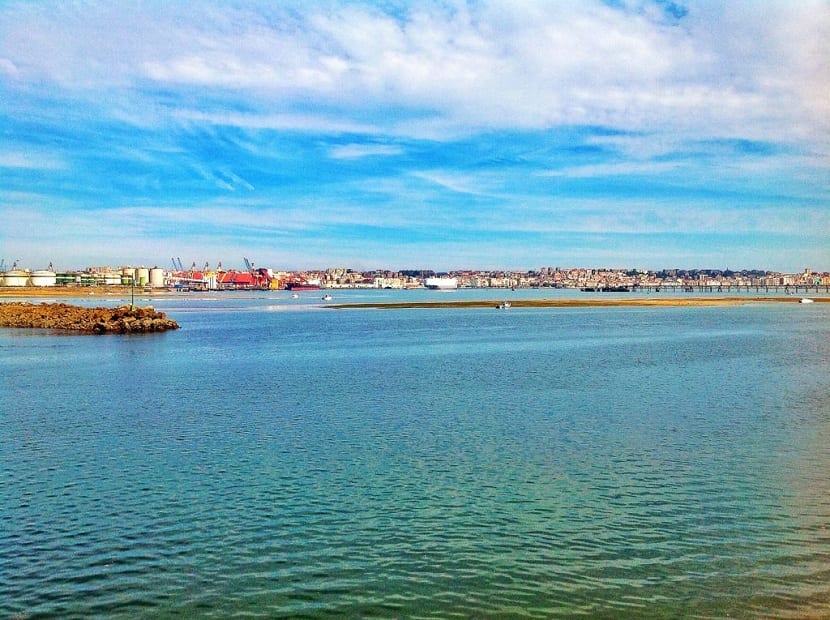
Something that you will surely already know is that the tides in the Mediterranean Sea are priceless. This occurs as it is an almost completely closed sea.. Its only "new" water inlet is through the Strait of Gibraltar. As this passage of water is so small, it cannot absorb a large number of liters of water from the Atlantic Ocean. Therefore, this large volume of water is retained in the strait. This fact makes the Strait act like a tap that is closed. In addition, it creates a strong inlet current but unable to reach the Mediterranean.
It can be said that there is not enough time for the Mediterranean to have tides. It can be appreciated a little in the most selected seasons, but they are not strong tides. During the emptying, the opposite happens and in the Strait a strong outflow towards the Atlantic is generated.
It should also be mentioned that being a small sea, the attraction of the moon is smaller. There are many points and coasts and it only reaches centimeters.
Cabanuelas 2016-2017
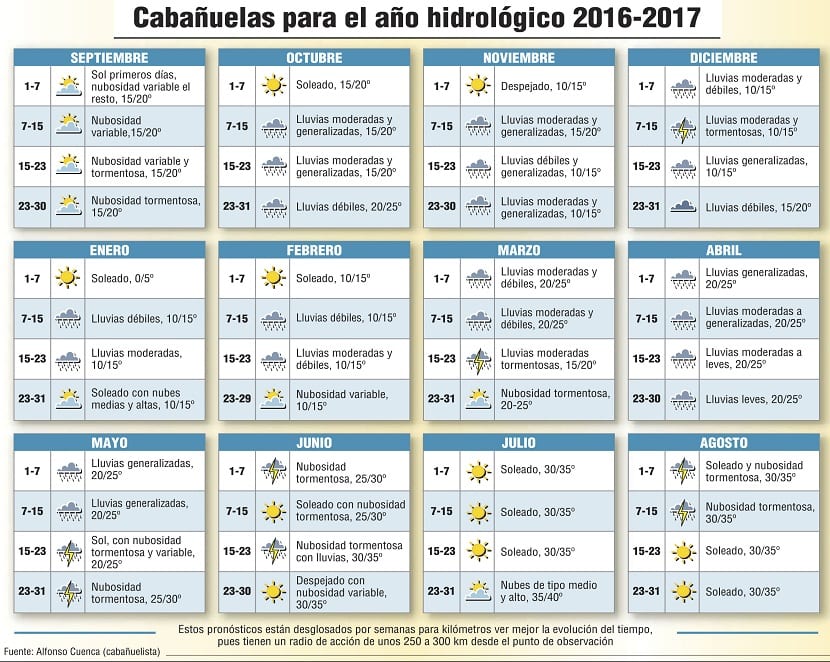
In 2016 Alfonso Cuenca predicted a spring with less rain than normal. In addition, he said that the fall and winter would also be drier. During the year 2017, rainfall was going to be scarcer, except in Easter and its surroundings.
In this prediction, our expert cabañuelista was not wrong since 2016 and 2017 have been the driest years in history.
I hope you can better understand what spring tides mean and what types there are. Now you have to analyze them to put what you have learned into practice.